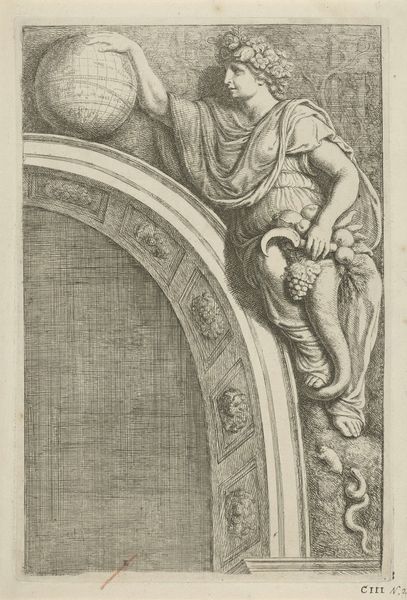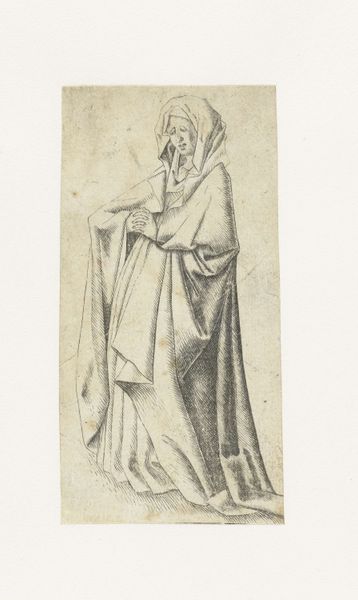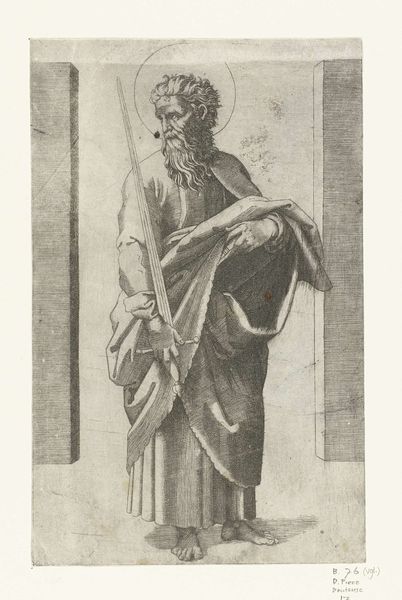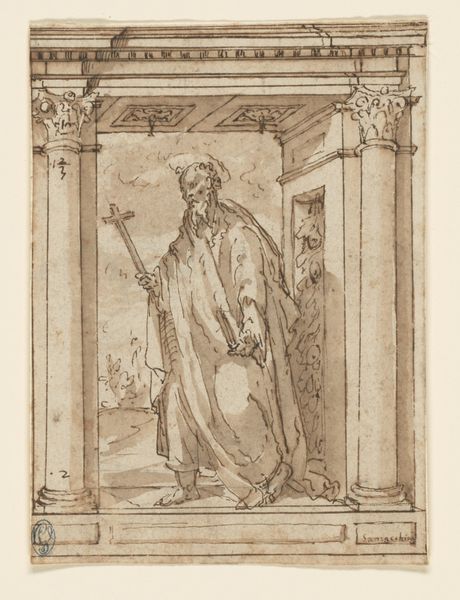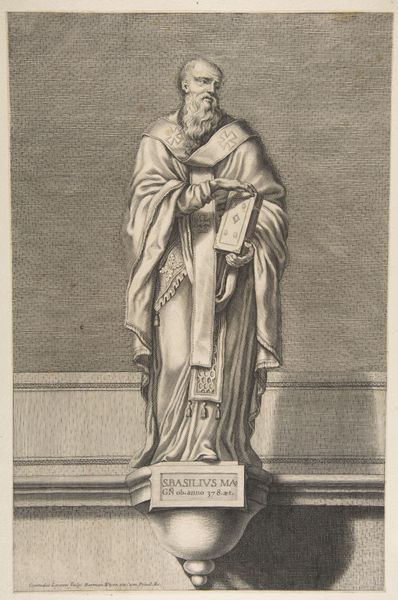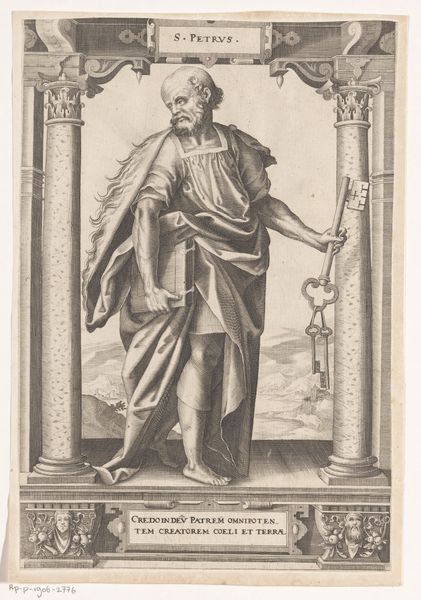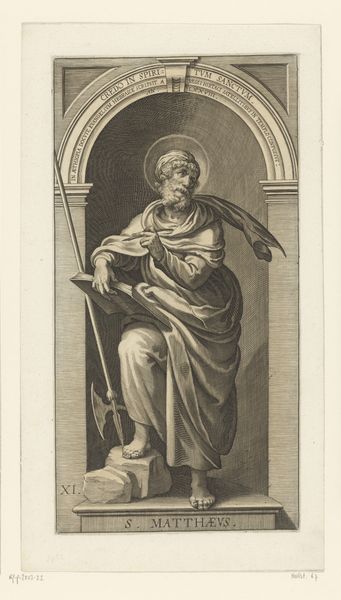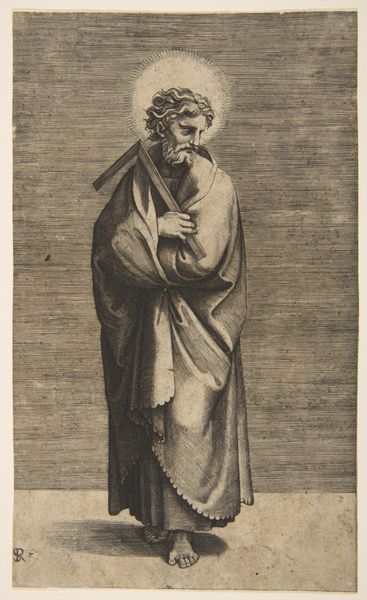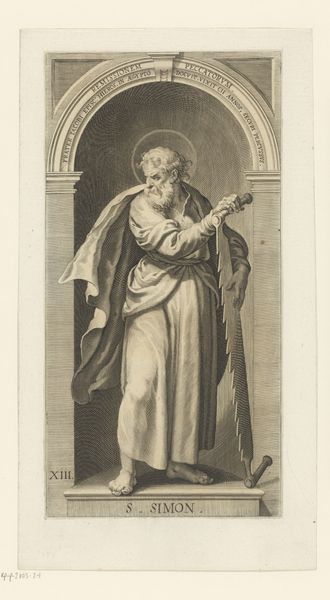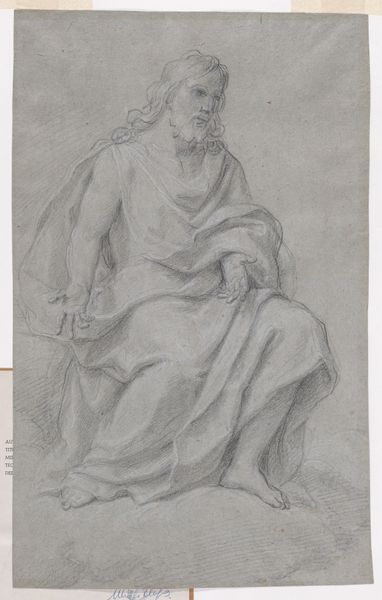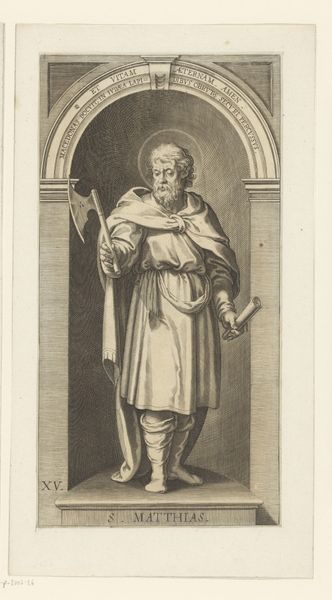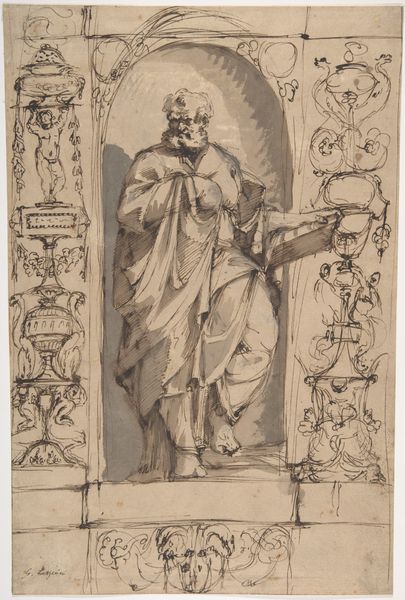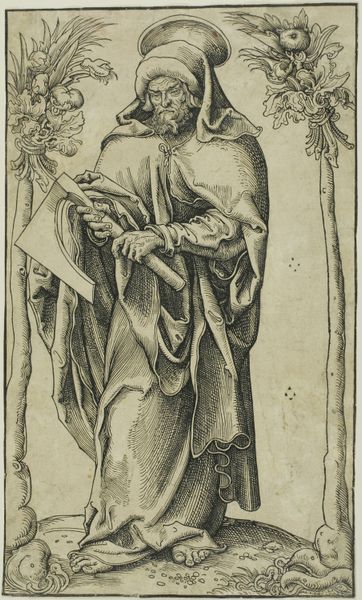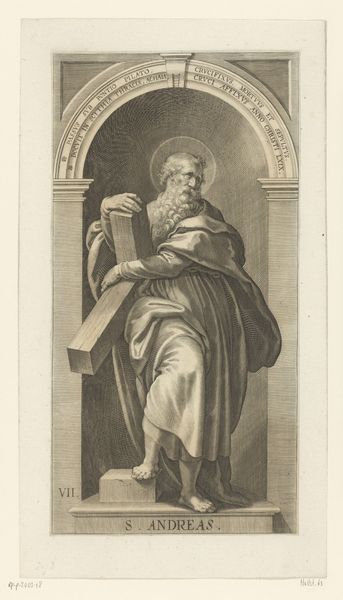
print, intaglio, engraving
#
portrait
#
medieval
# print
#
intaglio
#
figuration
#
form
#
11_renaissance
#
line
#
history-painting
#
engraving
Dimensions: height 291 mm, width 112 mm
Copyright: Rijks Museum: Open Domain
This bas-relief with a standing prophet holding a scroll, was made by Alessandro Nani in Italy during the second half of the 17th century. Nani created this artwork in a period when the Catholic Church still wielded immense influence over artistic production. The depiction of a prophet with a scroll visually signifies the importance of religious texts and the authority of the Church. The bas-relief medium itself, often used for religious and state monuments, reinforces the solemnity and permanence of the message. The figure's classical drapery and idealized features reflect a revival of classical forms, but also the Church's desire to link itself to the grandeur of the Roman Empire. The relatively small scale of the relief, might indicate it was intended for private devotion or as part of a larger decorative scheme within a religious institution. To fully understand this work, we need to consider the Counter-Reformation's impact on the arts, as well as the patronage networks that supported artists like Nani. Such research reveals how art served as a powerful tool for shaping religious belief and social order.
Comments
No comments
Be the first to comment and join the conversation on the ultimate creative platform.
